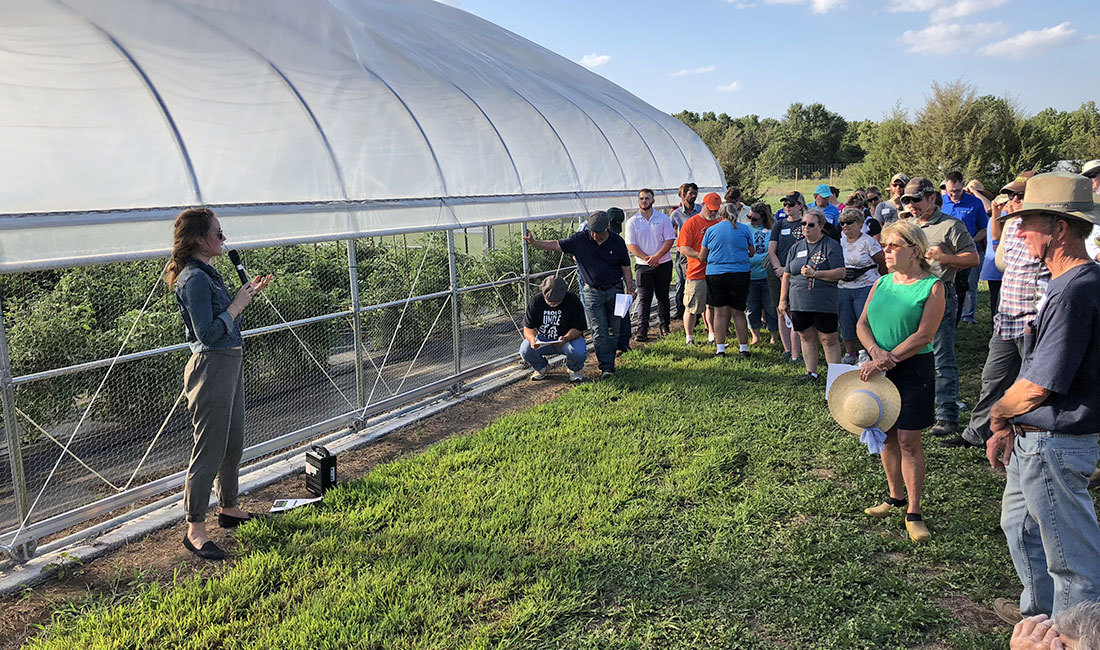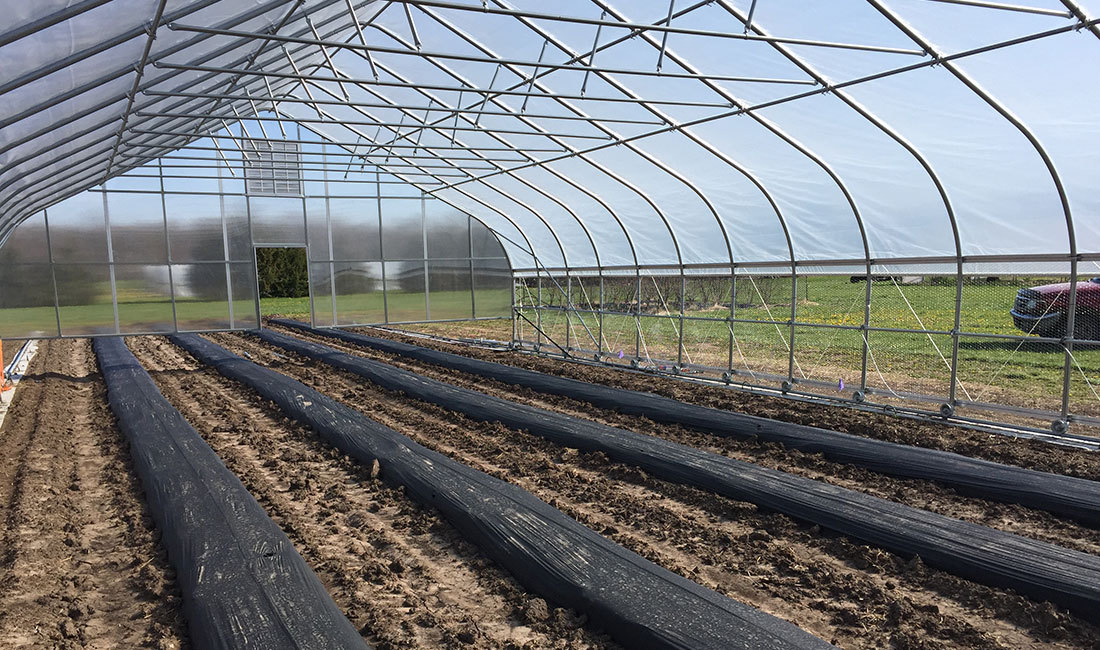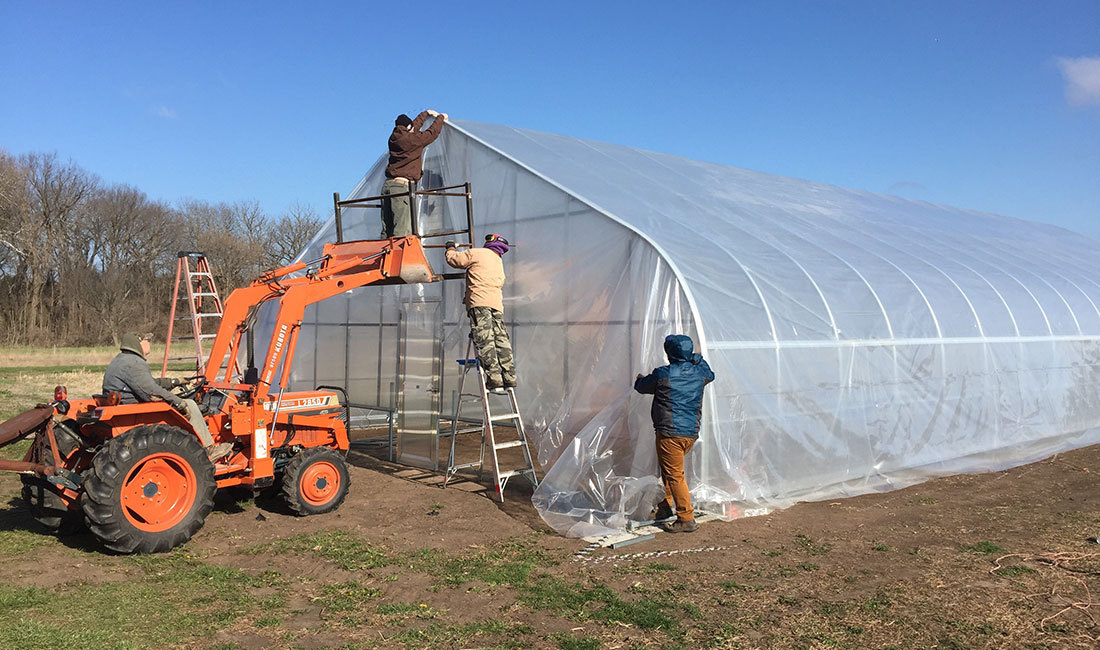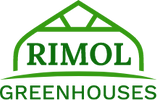Shining Light on High Tunnel Discoveries with Kansas State

Take a look around the windy, chilly fields of northeast Kansas and consider this: all around, crops like tomatoes, leafy greens, and others are growing better than ever.
How, you might wonder, can a grower make it out in these flatlands? How can crops withstand the windy winters and rainy springs and still bring in profitable harvests?
The answer: high tunnels - and few people understand just how important this technology is for Kansas growers quite like Cary Rivard, Associate Professor, Extension Specialist & Director of the Olathe Horticulture Research and Extension Center at Kansas State University.
Take a walk with Rivard around the tunnels at the research station in Olathe, KS and he’ll show you that growers here - who have adopted high tunnel growing at a rate not matched in many other places around the US - rely on advances found at universities like Kansas State to improve yields and boost profits, regardless of the conditions outdoors.
Rivard has been at the university since 2011, but K-State has spent nearly two decades working on improving the science of high tunnel production for a wide variety of growers, including those with years of high tunnel growing experience under their belt. The result: exciting insights into how to not only transition from field into high tunnel, but also how to make each year under the high tunnel better than the one before.

Finding The Sweet-Spot for The Ideal Growing Conditions
“One of the my favorite aspects [of our research],” said Rivard, “is that it has direct application for growers.”
Case in point: Kansas State’s work on minimizing soil health issues. All too often, growers who choose to bring up crops under the security and protection of a high tunnel face another threat from below: high salinity levels built up in soils that have been intensely cultivated without the added benefit of the outside world.
“It’s remarkable what happens to soil that receives no rain for years,” said Rivard, expressing the importance of soil management when growing in high tunnels. “We’ve seen issues with salt buildup and compaction, as well as over fertilization, that can be roadblocks for growers looking to maintain high yield from their crops In the long-term.”
Because of the limited space and high value of each square foot underneath a high tunnel, basic soil management techniques like fallow time or crop rotation become significantly more difficult, particularly for smaller growers working with especially limited space.
However, Rivard and his team may have found one solution works surprisingly well to both improve soil management and increase workable space underneath the high tunnel: making the entire high tunnel itself mobile.
By integrating a moveable high tunnel with their existing bed layout, the Kansas State team has been able to reduce the risk of high salinity and over fertilization within the high tunnel, and developed methods to help grow productive soil within the high tunnel system.

Building on A History of Discovery
This research on the benefit of moveable high tunnels actually sprang from previous work done by Rivard’s predecessor, Adjunct K-State Professor Ted Carey as well as C.B. Rajashekar, another professor at K-State.
When Rivard first arrived at Kansas State in 2011, Ted Carey and his team were experimenting with the use of poly film removal: exploring how sunlight levels - and, specifically, ultraviolet light levels - can affect the overall nutritional value in leafy greens.
The hypothesis was that greens exposed to different UV levels would contain different nutritional values at harvest time. That is because the presence of UV rays - and the stress they put on plants - can, in theory, encourage or discourage the levels of antioxidants present in the plants.
Plants in high tunnels tend to be relatively low-stress, while outdoor-grown plants tend to experience higher levels of stress. The goal was to see how stress affected antioxidant levels, and how to best control that using high tunnels.
More recently, moveable high tunnels played a key role in bringing that experiment to reality.
By planting leafy greens in long rows in a single field with the high tunnel positioned on mobile rails all along the length of the row, Rivard and his team were able to selectively allow UV light to reach specific plants in the field for specific periods of time. By covering come plants longer than other with the high tunnel, the Kansas State team was able to directly observe the effect of lower light levels on the nutritional value of the greens and provide recommendations to growers that are using movable tunnel technology.
The nutritional analysis is being done in Associate Professor Eleni Pliakoni’s lab at the nearby K-State Olathe campus as well as Dr. Rajashekar’s lab in Manhattan, Kansas. “It takes multiple years of field trials and countless hours of lab work to get to the bottom of an issue as complex as nutritional quality.” However, according to Prof. Rivard the said effect of light quality and quantity is apparent at face value. Plants with different UV exposure levels produced leaves with significantly different colors and yields - and that likely points to different biochemical reactions producing different antioxidant levels at the cellular level.
Most importantly: Rivard and the Kansas State team are working to narrow down the optimal level of UV exposure for specific antioxidant levels, helping growers identify which method will work best for their intended final product.
“This is a cool application of the moveable high tunnel, with real-world lessons for growers looking to improve their yields and provide nutritious food for their communities,” he said. “Growers can walk away with a real, practical knowledge of different growing strategies, and that is meaningful for small-acreage farmers here in Kansas.”

A Relationship Built To Grow
As much as Prof. Rivard’s work at Kansas State might seem like a natural fit with what we do here at Rimol, the pairing actually owes more to chance than anything planned.
Take a trip to your average Kansas farm and you’ll see plenty of metal frames, high tunnels, and greenhouses dotting the landscape. That’s because Kansas growers were actually some of the first to really jump at the opportunities presented by high tunnels early on, and temperatures below freezing followed by temperatures 40 or 50 degrees higher just a few days later is not all that uncommon.
That’s why we’ve been in the area working with growers on the ground for decades to help solve real problems. That presence - combined with our friends across the Midwest who are cued-in to exciting work in the field - are what brought us together with the Kansas State team.
Initially, much of the research centered around season extension to help growers keep crops coming through the cold Kansas springs and winters, where tornadoes and high winds are always a looming threat. Much of the primary research centered around grafting as a method of growing disease- and pest-resistant strains of tomatoes, leafy greens, and other crops.
For Rivard and the Kansas State team, working with an industry expert like Mike Marett at Rimol was a no-brainer.
“We rely a lot on our industry partners in our work,” Rivard said. “Rimol has been a great resource for us, especially as we explore new tools like moveable structures, solar power, and other new technologies.”
Our first real opportunity to share knowledge came at the 2017 Great Plains Growers Conference, when growers, community members, students and teachers all gathered for a chance to share in the latest and greatest in growing knowledge.
As one of the organizers, Rivard invited our own Mike Marett to speak on “Growing Your Business in Greenhouses” for a crowd of real growers looking to improve their yields. Since then, Mike has spoken twice in Kansas – at a high tunnel bus tour in June and then at the Olathe Horticulture Center Field Day in late August.
“Having Mike there was really helpful as we wandered on the farm with extension members, especially as folks check out our moveable tunnel and other structures,” said Rivard, remarking on the benefits of having industry partners like Rimol engaged with the learning and research process. “Now, we’re excited to have Rimol putting together some pieces to fix another pseudo-moveable tunnel for future work, and it’s the ability to provide this kind of knowledge that makes Rimol a really great resource for our team.”
From this experience, our partnership flourished - and continued right onto the Kansas State campus itself, helping Prof. Rivard and his team deliver better knowledge and amazing research to community extension members looking for better ways to stay profitable in an evolving agricultural market.

Bringing Discoveries Through Extension
While identifying new methods for improving yields and quality may always be on the docket for Prof. Rivard and the Kansas State team, another major goal is to provide in-depth learning opportunities for growers through K-State Research and Extension, the research and outreach arm of the university, and we’re more than happy to play a role in that.
One key factor is having equipment on-site for growers to see, enter, and engage with for themselves - because few opportunities beat on-the-ground learning experiences with professionals.
“It’s nice to actually have structures on our farm because people come to events like the field days and have the opportunity to talk about everything from the latest research to small and simple things, like how to put up flashing properly or how to best keep raccoons out,” said Rivard.
“There’s really no better way to stay in touch with the industry than doing stuff yourself, and with these structures and Rimol’s help we’re able to do just that.”
Looking Forward to The Future
Just like many of our other Institutional Partners, Rivard and his team see a lot of promise in the future of growing in protected environments like high tunnels and greenhouses - and for many growers, the exciting part is just getting started.
“Manipulating light, UV exposure, temperature, humidity, and other conditions - these are all the next black box in high tunnel research, with real implications for growers in the community,” the extension specialist said. “It’s been remarkably helpful to have this equipment as we bring more and more of this knowledge to our region.”
If you haven’t picked it up yet, we’re really excited by the work Prof. Rivard and his team are doing at Kansas State. That’s why we’re so thrilled to count Kansas State among our Institutional Partners, and why we think they serve as an excellent blueprint for the kinds of partnerships we look to build with all partners.
Looking forward, we’re excited to see just how big of a difference he and his team can make for growers facing real issues on the ground. Until then, we’ll keep on working together knowing that the future may very well be right there under their high tunnels.
Together, We Grow!
Shop
GREENHOUSES
Rimol Greenhouses are designed and manufactured to be, simply put the most dependable greenhouse structures around.
Browse Products